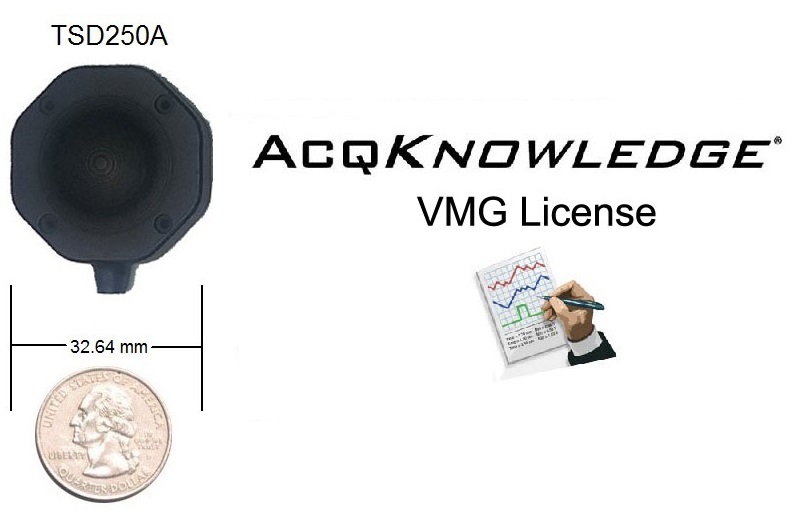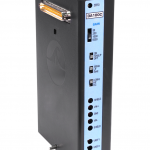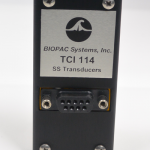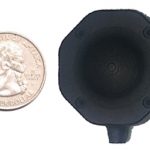AcqKnowledge software uses wavelet packet analysis to extract the vibrational components that correlate with the effort generated by the muscle being studied. AcqKnowledge includes automated VMG analysis filters to simplify the analysis process.
VMG provides extremely reproducible results. The single sensor solution and the lack of skin preparation improve the reliability and reproducibility of muscle effort recordings between muscles and across subjects.
- When comparing multiple subjects, identical transducers should be used. Results recorded with a TSD250A may not be directly comparable to data from older TSD250 and TSD251 transducers.
The accelerometers are secured over the muscle belly and record the small vibrations that occur when the muscle is activated. Transducer can be secured with a variety of attachment methods (not included), such as double-sided adhesive tape, Ace® bandages and Nylatex® wraps (2.5” or 4” width suggested). Do not use excessive pressure in securing the transducers—snug enough not to move is adequate.
Part #: VMG160PACK-W, VMG160PACK-M, VMG36RPACK-W, VMG36RPACK-M





Stay Connected